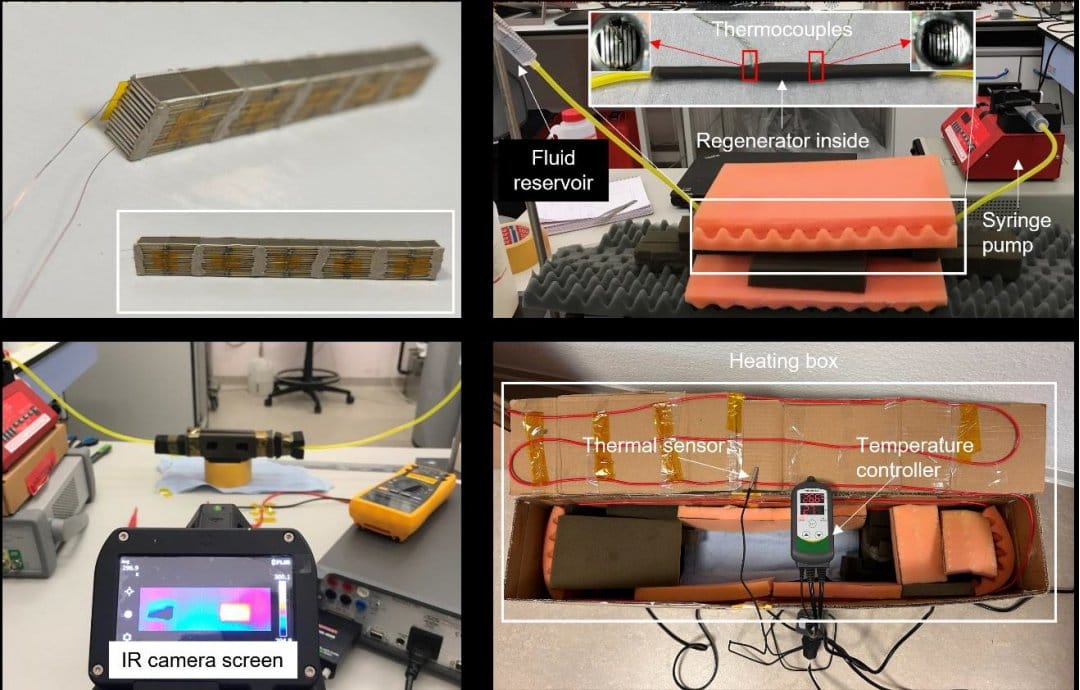
Students from Luxembourg develop an innovative electrocaloric air conditioner that promises to offer efficiency almost twice as high as traditional models.
Based on a phenomenon known as electrocaloric cooling, a new system, similar to a heat pump, promises to revolutionize space heating and cooling. This innovative electrocaloric air conditioner offers almost twice the efficiency of conventional appliances. In the next few lines, we will explore the various advantages that this advanced system brings.
New electrocaloric air conditioning delivers twice the efficiency of traditional models
Among the advantages of this new air conditioning is that it does not have moving parts that wear out and require maintenance, does not use liquids or refrigerant gases that are harmful to the environment and, as a result of the previous factors, consumes much less electricity.
Most air conditioners and refrigerators operate based on the compression and expansion of a fluid, which absorbs or releases heat when it migrates between environments with different pressures.
Although these systems are relatively cheap and simple to produce, they are not very efficient, which means they consume a lot of energy for the service they provide, around a fifth of the electricity used in buildings worldwide goes to refrigeration and air conditioning. .

Now Junning Li and colleagues at the Luxembourg Institute of Science and Technology have developed a refrigerant-free refrigeration device composed of metals including lead, tantalum and scandium.
The new electrocaloric air conditioning system can achieve maximum efficiencies of more than 60%, which is almost double the efficiency of typical household air conditioning units. The technology is based on a principle called electrocaloric cooling, which occurs when a temporary increase in temperature and a subsequent reduction when the electric field is removed.
Understand how the new electrocaloric air conditioning works
The prototype of the new cooling system consists of a stack of eight strips of the material known as lead scandium tantalate, which is electrocaloric. This battery was immersed in a heat-carrying fluid, silicone oil.
When an electric field is turned on, it causes the strips to heat up, forcing the fluid to move to the right; when the material cools, the fluid moves to the left, generating permanent regions of hot and cold, with about 20°C difference.

These regions are used as hot and cold reservoirs, from which oil can circulate through pipes to cool or heat rooms, or objects. Although the device's efficiency is theoretically 67%, the current prototype achieves around 12% efficiency. You researchers They hope to get closer to the theoretical maximum by seeking a better thermal conductor than lead scandium tantalate.
MIT researchers develop air conditioning for personal use
In addition to this new electrocaloric air conditioning, researchers at the Massachusetts Institute of Technology (MIT) have developed an air-conditioning bracelet called the Wristify, an innovation that promises to provide waves of cold or heat directly to the user.
The equipment works intelligently, with a system attached to the bracelet that directs pulses with hot or cold waves directly to the user's wrist.
According to researchers, by sending these waves continuously into a specific area, they can impact the entire body, taking advantage of human skin's sensitivity to rapid temperature changes.
According to Sam Shames, project developer, explains that this process generates an illusion that deceives the body, making it feel cold or hot in the desired location. This idea could be a great alternative for those who don't have air conditioning at home, potentially playing a role in reducing energy consumption linked to cooling buildings. The bracelet has an autonomy of 8 hours and the sensors allow a temperature variation of up to 0,4 °C per second.












